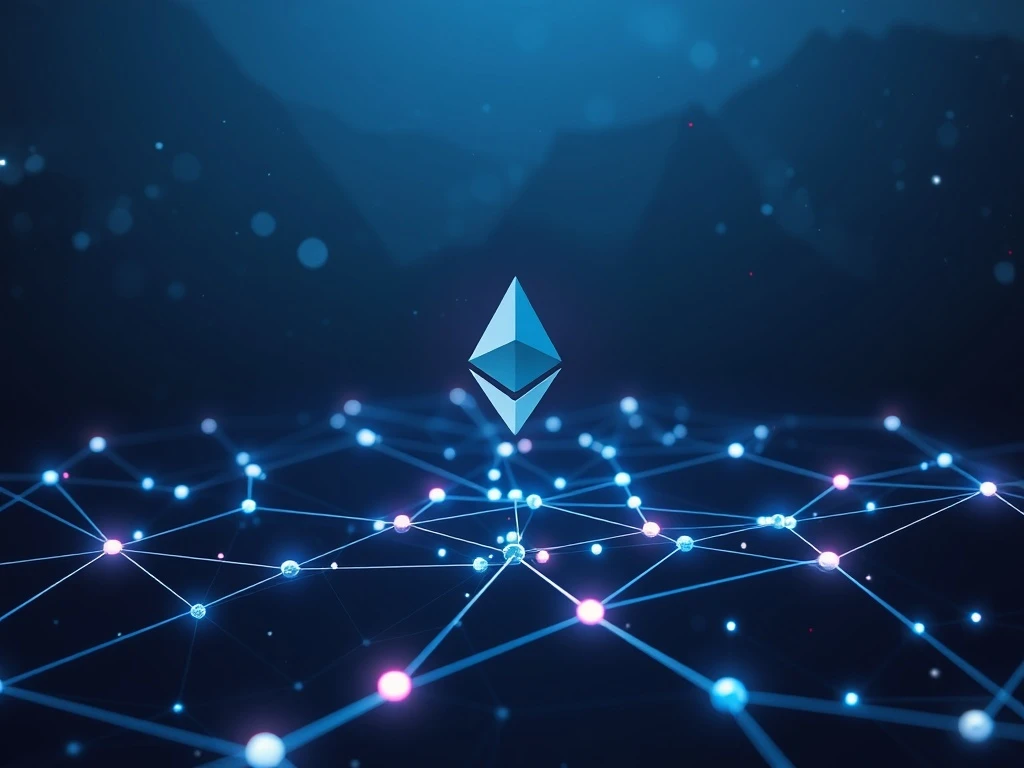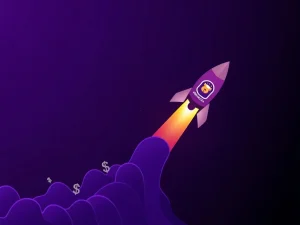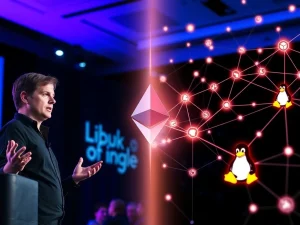Ethereum Upgrade: Fusaka’s Monumental Leap Forward & Glamsterdam’s Visionary Path

The world of decentralized finance and blockchain technology is constantly evolving, and at its heart lies Ethereum, a network known for its continuous innovation. If you’re invested in or simply curious about the future of crypto, you’re in for an exciting ride. Ethereum core developers are pushing the boundaries with two significant network enhancements: the upcoming Fusaka hard fork and the subsequent Glamsterdam upgrade. These developments are not just technical milestones; they represent a crucial step towards a more efficient, scalable, and resilient Ethereum, promising to reshape user experience and developer capabilities across the ecosystem.
Understanding the Impending Fusaka Hard Fork: What to Expect?
The Ethereum network is on the cusp of another transformative moment with the tentative November release of the Fusaka hard fork. This major protocol upgrade is specifically designed to enhance network efficiency and bolster Ethereum scalability. Following the successful Pectra hard fork, which introduced features like account abstraction and improved layer-2 network efficiency, Fusaka aims to build on this momentum, continuing Ethereum’s commitment to robust performance.
The development timeline for Fusaka is progressing rapidly. Its next devnet is scheduled to go live, with the first public testnet anticipated for late September. This rigorous testing phase is critical to ensure a smooth transition and the stability of the mainnet launch. Key aspects of the Fusaka upgrade include:
- Inclusion of 11 Ethereum Improvement Proposals (EIPs): These proposals are a collection of standards and specifications that dictate how the Ethereum network operates and evolves.
- EIP-7825 for Resilience and Scaling: One of the standout EIPs in Fusaka is EIP-7825. This proposal is particularly vital as it aims to make the network more resilient against malicious attacks while simultaneously improving its ability to handle a larger volume of transactions, directly addressing concerns about Ethereum scalability.
- Proposed Gas Limit Increase: Ethereum core developers have also put forward a proposal to raise Ethereum’s gas limit to 150 million. A higher gas limit means more transactions can be processed within each block, potentially leading to lower transaction costs and increased throughput for users.
- Strategic EIP Removals: To accelerate the testing process and ensure a timely release, certain EIPs have been removed from the Fusaka scope. For instance, EIP-7907, which would have doubled the contract code size limit and introduced new gas metering, has been deferred. Similarly, the controversial EVM Object Format upgrade will not be part of Fusaka, as confirmed by core developer Tim Beiko.
While the excitement builds, some concerns regarding the tight timeline have been voiced. Ethereum protocol support member Nixo highlighted the need for client releases within a short timeframe to meet the proposed Devconnect deadline in November. This underscores the intense coordination and effort required by developers to deliver such a complex Ethereum upgrade.
Glamsterdam: Charting Ethereum’s Post-Fusaka Future
Even as Fusaka takes center stage, the Ethereum community is already looking ahead to the next major network enhancement: the Glamsterdam hard fork. Slated to follow Fusaka, Glamsterdam is poised to introduce even more profound changes to the protocol, with feature upgrades set to be confirmed on August 1st during the next AllCoreDevs – Execution meeting.
The discussions around Glamsterdam reveal an ambitious vision for Ethereum’s long-term evolution. Two particularly noteworthy proposals are currently under consideration:
- Reduced Block Time: Ethereum core developer Barnabé Monnot has suggested reducing the block time from the current 12 seconds to a mere 6 seconds. If approved and implemented, this change, expected to roll out with Glamsterdam sometime in 2026, could significantly improve user experience, especially for decentralized finance (DeFi) applications that rely on rapid transaction finality. Faster block times mean quicker confirmations and a more responsive network overall.
- Increased Gas Limit (Again!): Beyond Fusaka’s proposed increase, Ethereum validators have shown strong support for raising the network’s gas limit even further, to 45 million. Ethereum co-founder Vitalik Buterin noted that almost 50% of staked ETH is voting in favor of this increase. A higher gas limit directly translates to reduced transaction costs and further improvements in Ethereum scalability, making the network more accessible and cost-effective for everyday users.
These potential upgrades in Glamsterdam signify Ethereum’s continuous drive to optimize its core infrastructure, ensuring it remains competitive and capable of supporting the burgeoning decentralized ecosystem. The community’s push for more frequent and faster upgrades reflects a collective desire to see Ethereum reach its full potential as a global settlement layer.
Why Does Ethereum Scalability Matter So Much?
For anyone involved with Ethereum, the term ‘scalability’ is constantly on the radar. But why is it so critical? At its core, Ethereum scalability refers to the network’s ability to handle a growing number of transactions and users without compromising speed, security, or decentralization. As more dApps are built, more users join, and more transactions occur, the network can become congested, leading to higher gas fees and slower transaction times. This can hinder adoption and limit the network’s utility.
The upcoming Ethereum upgrades, Fusaka and Glamsterdam, directly address these challenges. By increasing the gas limit, implementing proposals like EIP-7825, and potentially reducing block times, Ethereum aims to:
- Lower Transaction Costs: A more scalable network can process more transactions per second, which, under normal circumstances, helps to reduce the ‘price’ of each transaction (gas fees).
- Improve User Experience: Faster transaction finality and less network congestion mean a smoother, more responsive experience for everyone interacting with dApps, from swapping tokens on a DEX to playing blockchain games.
- Support Innovation: A highly scalable base layer provides a robust foundation for developers to build more complex and demanding applications, unlocking new possibilities in DeFi, NFTs, gaming, and beyond.
- Enhance Network Resilience: Upgrades like EIP-7825 are crucial for fortifying the network against potential attacks, ensuring its continued operation and security as it grows.
These improvements are not just about raw speed; they are about creating an environment where Ethereum can truly become the backbone of a decentralized future, accommodating millions, if not billions, of users globally.
The Broader Impact of the Next Ethereum Upgrade Cycle
The ongoing cycle of Ethereum upgrades, from Pectra to Fusaka and then Glamsterdam, reflects a deliberate and strategic roadmap for the network’s evolution. This methodical approach ensures that new features are thoroughly tested and integrated, minimizing risks while maximizing benefits.
For developers, these upgrades mean a more powerful and versatile platform to build upon. With increased gas limits and improved resilience from features like EIP-7825, they can design more sophisticated smart contracts and dApps without constantly battling network constraints. This fosters innovation and encourages the creation of novel decentralized solutions.
For validators, the changes, particularly to the gas limit, impact their operations and potential rewards. The strong community consensus around increasing the gas limit indicates a shared vision for a more efficient network, even as it requires adjustments from node operators.
And for the everyday user, the ultimate beneficiaries are lower fees, faster transactions, and a more reliable experience. Whether you’re making a simple transfer, participating in a DeFi protocol, or minting an NFT, the underlying network improvements will translate into tangible benefits, making Ethereum more accessible and enjoyable to use.
A Glimpse into the Future: What’s Next for Ethereum?
The continuous development of Ethereum, exemplified by the upcoming Fusaka hard fork and the planning for Glamsterdam, underscores its position as a leading force in the blockchain space. The commitment to regular upgrades, driven by core developers and community consensus, ensures that Ethereum remains at the forefront of technological innovation.
As we move towards November for Fusaka and look further ahead to Glamsterdam in 2026, the trajectory is clear: a more robust, efficient, and user-friendly Ethereum. These aren’t just incremental changes; they are foundational shifts designed to support the next wave of decentralized applications and truly onboard the world to web3. Staying informed about these developments is key for anyone navigating the dynamic landscape of cryptocurrency, as they directly influence the utility and value proposition of the entire Ethereum ecosystem.










